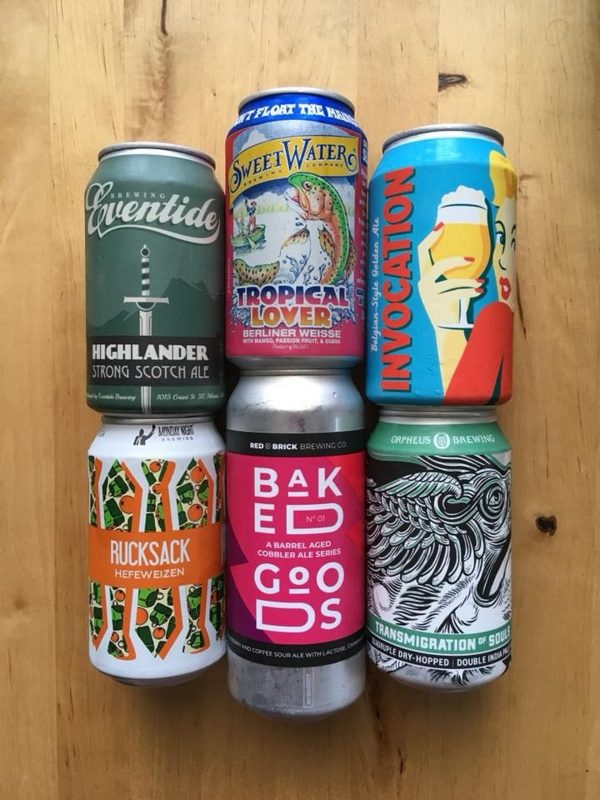A Brief History Of Atlanta Brewing

For years, strict liquor laws and a forced dependence on distributors stifled Georgia breweries – and, to some extent, they still do.
Pixabay Images
By Heather Karellas, contributor
Atlanta’s beer scene has grown exponentially in the past few years, but how did we get here – and what’s next?
While Atlanta had a booming saloon business in the late 1800s, prohibition halted the production and sale of alcohol in the early 20th century. “Atlanta Beer,” a book by Ron Smith and Mary O. Boyle, notes that a few small breweries dotted the city’s landscape in the mid-1900s – but for two decades (1972-1992), there were no Atlanta breweries at all.
According to Smith and Boyle, “Brewing in the South is a lesser-known history… [it] has always been a push-and-pull struggle between the evangelical and the entrepreneurial.”
This struggle continues today as Georgia lawmakers continue to grapple with the implications of current and potential liquor laws.
The modern story of Atlanta beer begins in 1993 with the opening of Marthasville Brewing Co. (the first contemporary craft brewery in Atlanta until its demise in 1997) and Atlanta Brewing Co. (now Red Brick Brewing Co.).
Red Brick remains Georgia’s oldest operating craft brewery and began production four years prior to SweetWater’s opening in 1997. However, SweetWater’s iconic green 420 bottles defined the local beer section at most Atlanta grocery stores during the late ’90s and the first decade of the 2000s and remain a strong symbol of Atlanta brewing today.
Even though Atlanta only had two major breweries prior to 2000, the demand for excellent beer existed well before its recent boom in popularity.
Twain’s Brewpub & Billiards opened in 1996, offering guests delicious brews, approachable dishes and bar games such as pool and darts. Brick Store Pub opened shortly after in 1997, with a global beer menu comparable to a phone book and which rivaled some of the most comprehensive wine lists at a five-star restaurant.

In 2004, Georgia House Bill 645 ended the state’s 6 percent ABV (alcohol by volume) law, allowing Georgians to purchase beers up to 14 percent. This change allowed Atlanta beer enthusiasts to finally explore a wider range of brews in local restaurants and in the comfort of their homes – from notoriously high-ABV Belgians to specialty high-ABV craft beers.
As Georgians (and especially Atlantans) became more curious about quality craft beer in the mid-2000s, nationwide brewery growth paralleled the trend.
The Brewers Association, which tracks U.S. craft brewery statistics, reports that from 2000 to 2010, the number of microbreweries in the U.S. grew by a whopping 53 percent. As staggering as that growth may seem, it was just the beginning: from 2010 to 2011, the number of U.S. microbreweries again jumped by another 36 percent.
The majority of well-known Atlanta breweries got their start during the craft beer uptick in 2010.
A steady stream of local breweries entered the market each year: JailHouse (2009), Second Self (2010), Monday Night (2011), Wild Heaven (2011), Red Hare (2011), Blue Tarp (2012), Three Taverns (2013), Jekyll (2013), Orpheus (2014), Abbey of the Holy Goats (2016-RIP), Arches (2016), Gate City (2016), Scofflaw (2016) and many more.
Today, the metro Atlanta area claims roughly 30 microbreweries – nearly half the microbreweries in Georgia.
With tremendous craft beer growth over the past decade (nationwide, in Georgia and in Atlanta), some skeptics might wonder if this trend will soon reverse. Is craft beer a passing fad that will soon popularize itself out of existence?
There are now more than six times more microbreweries in the U.S today than there were as recently as 2010.
Regardless, the data would suggest that craft beer is here to stay.
While the overall U.S. beer market decreased by 1 percent in 2017, craft beer sales grew by 5 percent – and the number of craft breweries increased by another 16 percent. More and more consumers are passing up Bud Light and Guinness and continuing to demand quality local beers.
While it’s true that craft beer growth isn’t slowing down anytime soon, Georgia has plenty of room to grow.
For years, strict liquor laws and a forced dependence on distributors stifled Georgia breweries – and, to some extent, they still do.
The passage of SB63 in 2015 was an encouraging milestone: the bill allowed breweries to sell up to 64 ounces worth of beer “to-go.” Unfortunately, the beer had to be in a single container, such as a growler or bomber, which limited the practicality of the bill.
In 2017, SB85 allowed breweries to sell directly to consumers (both on-site and to-go) without the guise of a “tour and taste” format. At the time, Georgia was one of only four states that did not allow direct sales. The bill also allowed for the existence of “production breweries” – breweries with an in-house restaurant.
Unlike a brewpub, production breweries can package and distribute their beer just as other breweries do. SB85 has paved the way for continued brewery growth in the state.
Georgia now ranks 15th in the country for craft beer production – but that’s largely due to SweetWater, whose 250 barrel brewhouse produces around half the state’s annual output.
When it comes to the number of breweries per capita, Georgia is dead last. But there are plenty of people devoted to solving this “problem.”
With the opening of New Realm Brewing on the BeltLine Eastside Trail in early 2018, brewmaster Mitch Steele (formerly of Stone fame) has unsurprisingly brought a slew of IPAs to market, with their Hoplandia IPA leading the lineup.
Unlike many other Atlanta breweries which rely on food trucks and external vendors to feed visitors, New Realm has a restaurant on-site, taking full advantage of the “production brewery” provision mentioned above as well as the BeltLine’s growing popularity.
Next on the horizon, Southern rap group Nappy Roots plans on opening a brewery on Atlanta’s Southside after regularly collaborating on beer releases with Monday Night Brewing in 2017.
Many breweries are also offering on-site activities such as yoga classes, “yappy hours” in partnership with animal rescue groups and even embroidery classes and other craft-based activities.
Oakland Cemetery even offers a “Malts and Vaults” tour series that chronicles the history of brewing in Atlanta for those with a thirst for knowledge and brews.
This article originally ran on the Atlanta Loop website.








